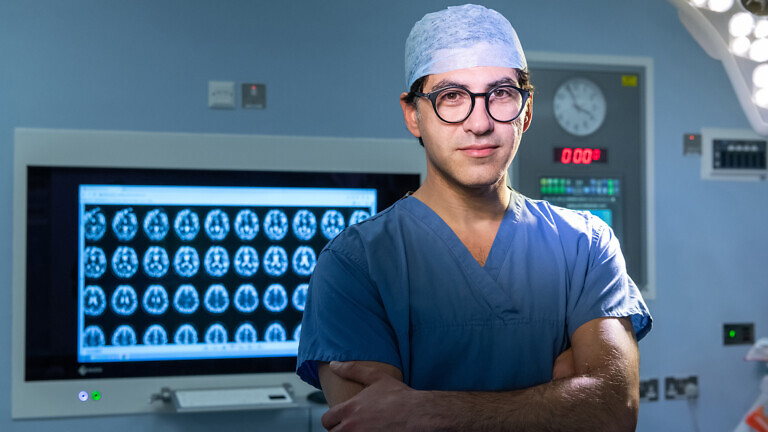Queen Square Imaging Centre has developed a non-invasive imaging technique for essential tremor that enhances the precision and outcomes of MR-guided focused ultrasound.
A study by neurosurgeons from Queen Square Imaging Centre in London has developed a non-invasive imaging technique for essential tremor that enhances the precision and outcomes of MR-guided focused ultrasound (MRgFUS).
Essential tremor causes uncontrollable shaking, typically in the hands, and severely impacts an individual’s work, independence and mental wellbeing. While medication is often the first line of treatment, it fails to help many patients long-term, leading to the need for more advanced interventions.
A new technique using FAT1 imaging – an MRI approach that fuses multiple scan types – offers a new option to invasive surgeries or limited treatment options.
The study marks the first clinical use of FAT1 imaging to guide focused ultrasound treatment for essential tremor. Traditionally, clinicians have relied on generalised brain maps to estimate the location of the target area deep within the brain – the Ventral Intermediate Nucleus (Vim) – which is extremely small and hard to visualise on standard MRI scans.
FAT1 imaging overcomes this by giving surgeons a clear, direct view of the individual patient’s Vim, enabling treatment to be far more precise.
A game changer
“FAT1 imaging is a game changer,” said consultant neurosurgeon Harith Akram, who both developed the technique and led the research. “By improving the visibility of the brain structures we need to target, we can deliver this non-invasive treatment with greater accuracy, faster results and fewer side effects, making a meaningful difference to patients’ lives,” he continued.
The study showed strong results for patients.
Of the 14 patients with essential tremor treated using MRgFUS guided by FAT1 imaging, tremor improved by an average of 60% at 12-month follow-up.
Procedures were faster, required less energy, and achieved accurate targeting on the first attempt in every case. And side effects were milder and shorter-lasting, with better avoidance of nearby brain regions.
Unlike traditional treatments such as Deep Brain Stimulation (DBS) or Radiofrequency Ablation (RFA), MRgFUS is completely non-invasive and incisionless. It works by focusing sound waves to heat and destroy the tremor-causing area of the brain, all carried out under real-time MRI guidance.
With no surgery, no implants and a quicker recovery, MRgFUS is increasingly being seen as the treatment of choice for eligible patients who do not respond to medication.



